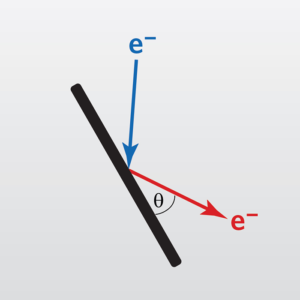Electron Backscatter Diffraction (EBSD)
Home » Our Techniques » Imaging » EBSD
Electron Backscatter Diffraction (EBSD) is a technique that is uniquely suited to characterize crystallographic properties of your samples. Proprieties such as: grain size, grain shape, grain orientation, grain boundary misorientation, spatial distribution of phases, local deformation and texture can all be characterized by this technique.
EBSD Analysis is a great complement to the excellent capabilities of our X-ray diffraction (XRD) services. While our XRD tools and staff can provide unparalleled information on phase ID, nanocrystalline grain size, thin film thickness and textures; the new capabilities available by EBSD will provide spatial information, help to visualize the microstructure and add to a complete description of your crystalline samples.
Ideal Uses of EBSD
- Visualization of microstructure with spatial coordinates
- Characterization of texture in exact locations such as near welds or on semiconductor bond pads
- Characterization of grain size & texture as it related to finish quality in sheet steel and Al
- Measurement of large grains, without the error associated with LM
- Characterization of special grain boundaries, such as CSL’s and twins
- Measurement of grain misorientation
- Characterization of deformation by examination of intragrain misorientation and grain aspect ratio
- Characterization of epitaxially grown thin films
- Characterization of in-depth texture, by examining cross sections
EBSD Examples
EBSD – Electron Back Scatter Diffraction is a technique using the electron beam of a SEM to differentiate the crystallographic orientations of grains on a sample surface. From EBSD we obtain:
- Grain orientation
- Grain size
- Misorientation between grains
- Pole figures and maps
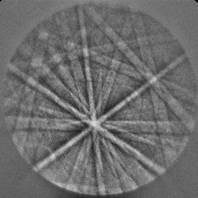
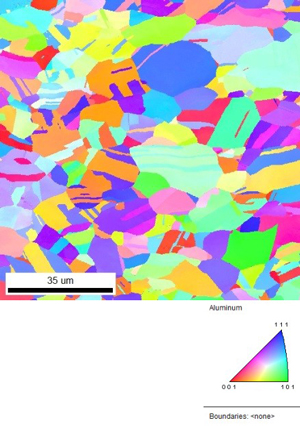
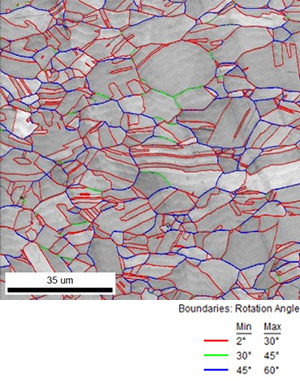
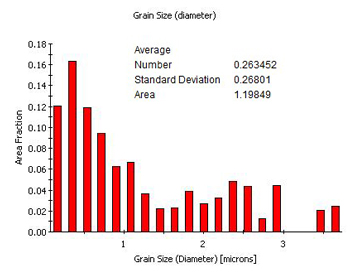
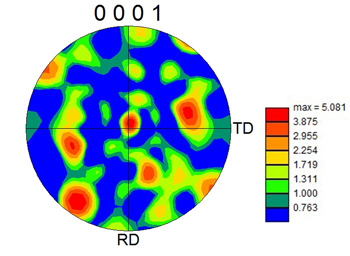
Strengths
- Accurately provides spatially resolved grain size and phase information from several 10s of nm to several 10s of mm.
- Provides texture information from localized area.
- Provides grain boundary angle information.
- Can be used for failure analysis.
Limitations
- The phase information needs to be known a-priori.
- Cannot analyze amorphous materials.
- Cannot distinguish phases of similar crystal structures (need to use EDS-EBSD technique).
- High-quality polished surface is required.
EBSD Technical Specifications
- Signal Detected: Diffracted electrons
- Elements Detected: All elements, assuming they are present in a crystalline matrix
- Detection Limits: Grain size >80 nm
- Quantitative analysis: Grain size and related measurements: ~10%
Related Resources
Would you like to learn more about using Electron Backscatter Diffraction (EBSD)?
Contact us today for your Electron Backscatter Diffraction (EBSD) needs. Please complete the form below to have an EAG expert contact you.
